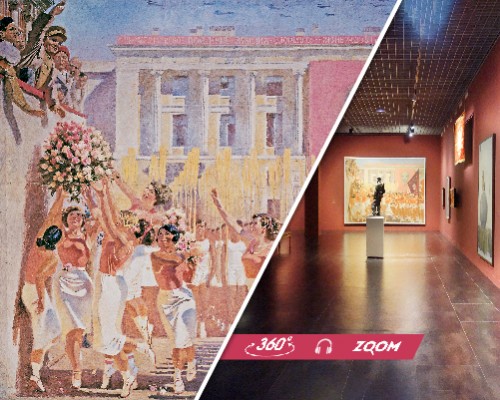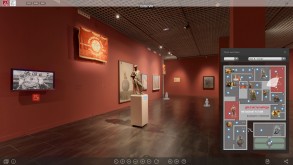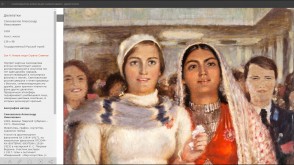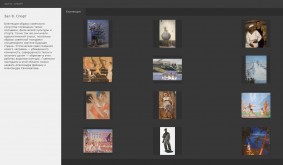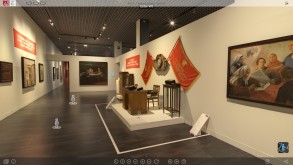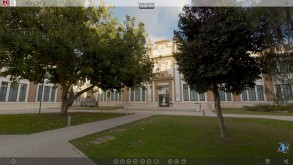Radiant Future. Art of Socialist Realism Online
Virtual tour of the exhibition, held in the branch of the Russian Museum in Málaga (Spain) from February 10, 2018 to February 03, 2019. The exhibition, encompassing topics from industrialization and agriculture to sport and youth.
Show full textThe period between the 1930s and the 1950s was indeed a controversial period in the history of Russian art. In the Soviet Union, the state regulated art in all aspects, having declared ideological change and education of the working class its primary function. Social realism was proclaimed mandatory artistic method for all Soviet artists. Understandable for the masses and stylistically close to the Russian painting of the turn of the 19th century, the art of that period created a plausible image of a just and prosperous state, in which each citizen is happy and full of enthusiasm due to the triumph of socialism.
The canon of socialist realism was not only ideologically powerful, but also didactical, narrative, and spectacular. Oriented to the broadest public, it formed an optimistic myth about the realization of a communist utopia. Works of that period reflect not only ideological demands and norms, but also the collective will of people, their dreams of a fair, beautiful, and exuberant future.
The exhibition includes over 100 works of painting, sculpture, and decorative and applied art from the collection of the Russian Museum and features artworks by such artists as S. Adlivankin, I. Brodsky, A. Gerasimov, A. Deineka, P. Konchalovsky, Yu. Pimenov, A. Samokhvalov, and K. Yuon.
RADIANTE PORVENIR. EL ARTE DEL REALISMO SOCIALISTA
La exposición se ha exhibido desde el 10 de febrero de 2018 hasta 3 de febrero de 2019 en la filial del Museo Estatal Ruso en Málaga (España). En la historia del arte ruso, el periodo comprendido entre las décadas de 1930 y 1950 es sumamente contradictorio.
Texto completoEl régimen totalitario establecido entonces en la Unión Soviética controlaba todos los aspectos de la vida de los ciudadanos; incluso el proceso artístico fue regulado por el estado. La función principal del arte era producir propaganda con un objetivo: «la transformación ideológica y la educación de los trabajadores en el espíritu del socialismo». El realismo socialista se convirtió en el lenguaje obligatorio para todo el arte soviético. Los artistas tenían que crear, con modos de expresión comprensibles para las grandes masas, una imagen convincente de un estado poderoso, justo y próspero en el que, gracias a la victoria del socialismo, todos los ciudadanos eran felices y estaban llenos de solícito entusiasmo.
